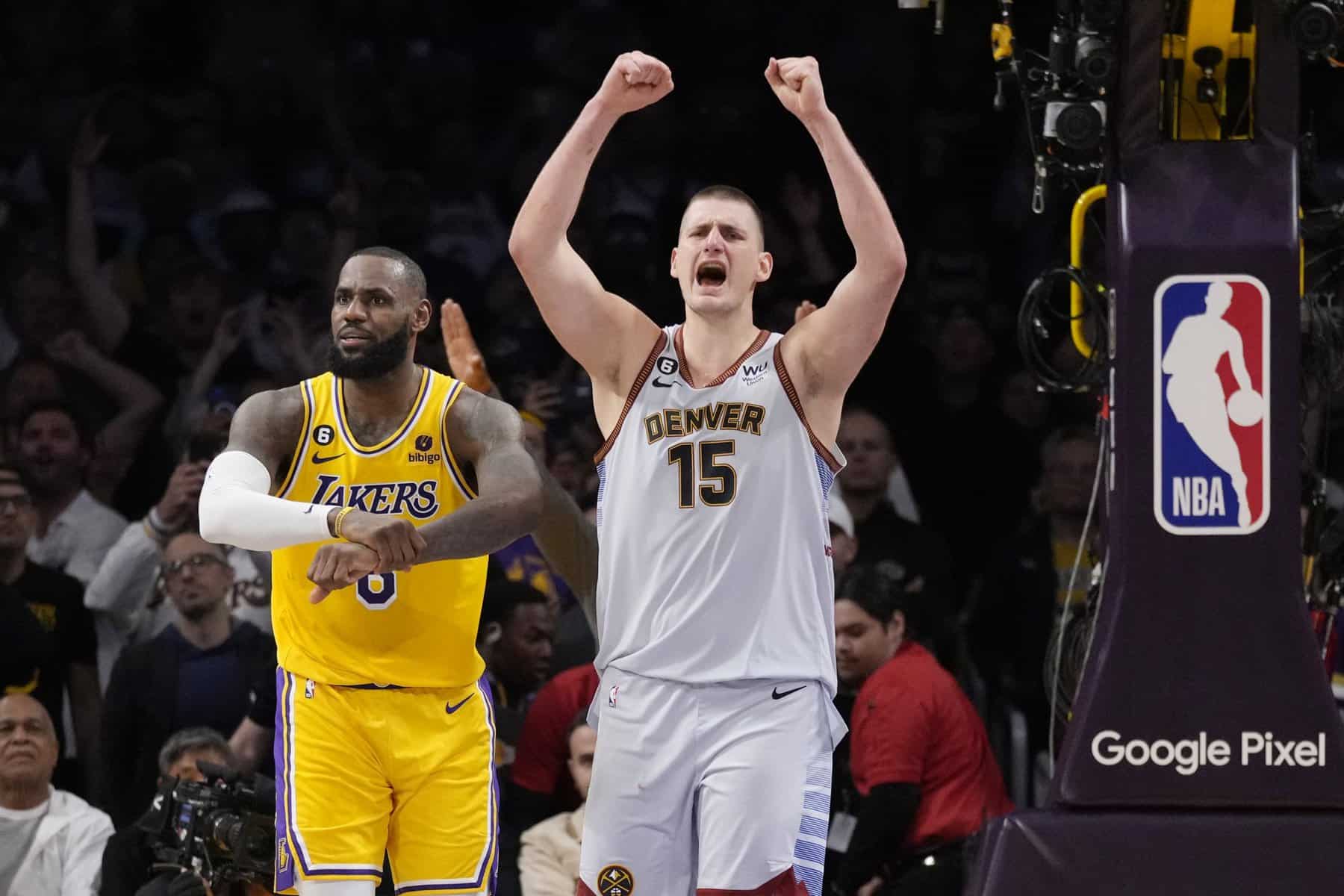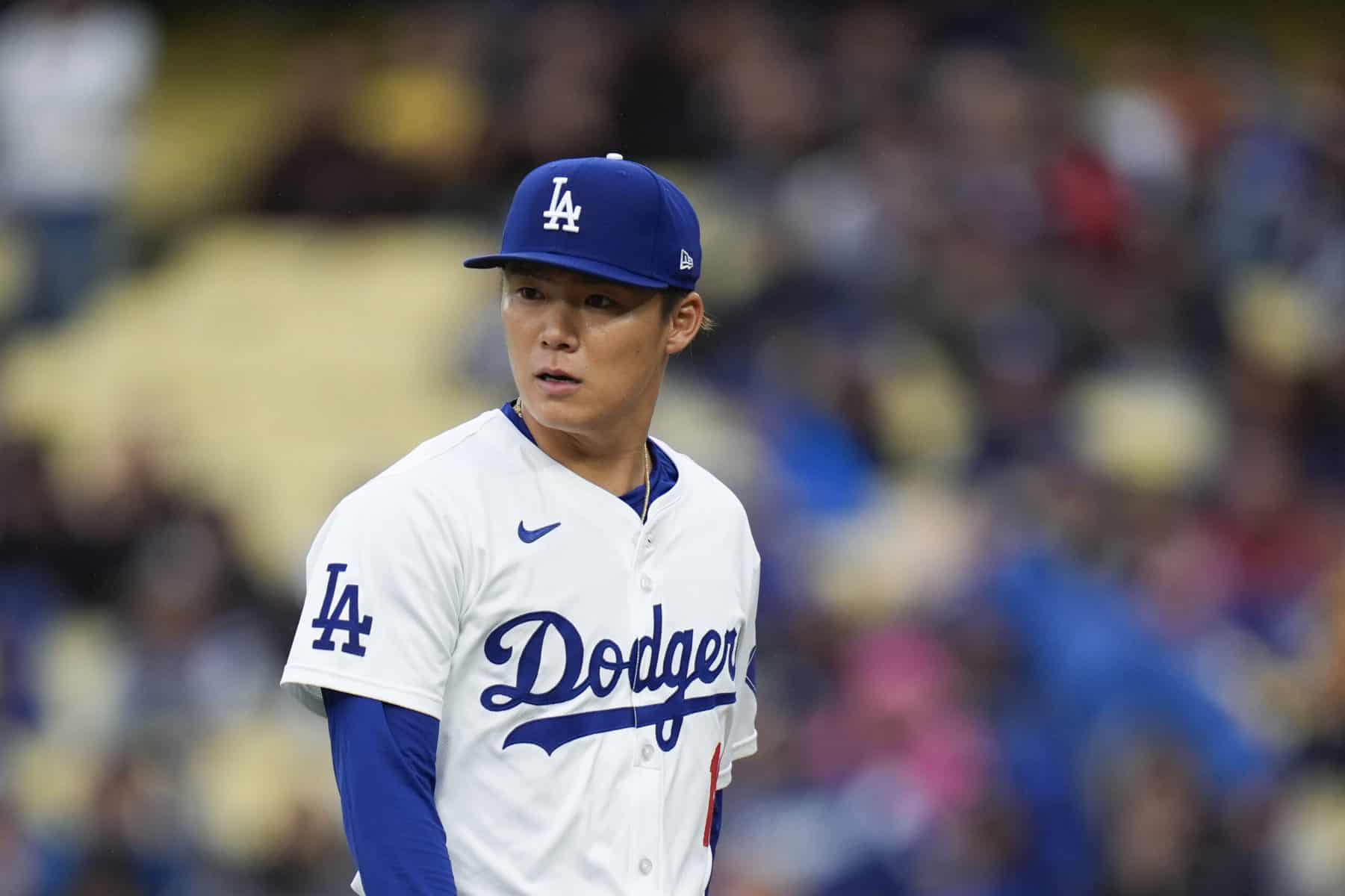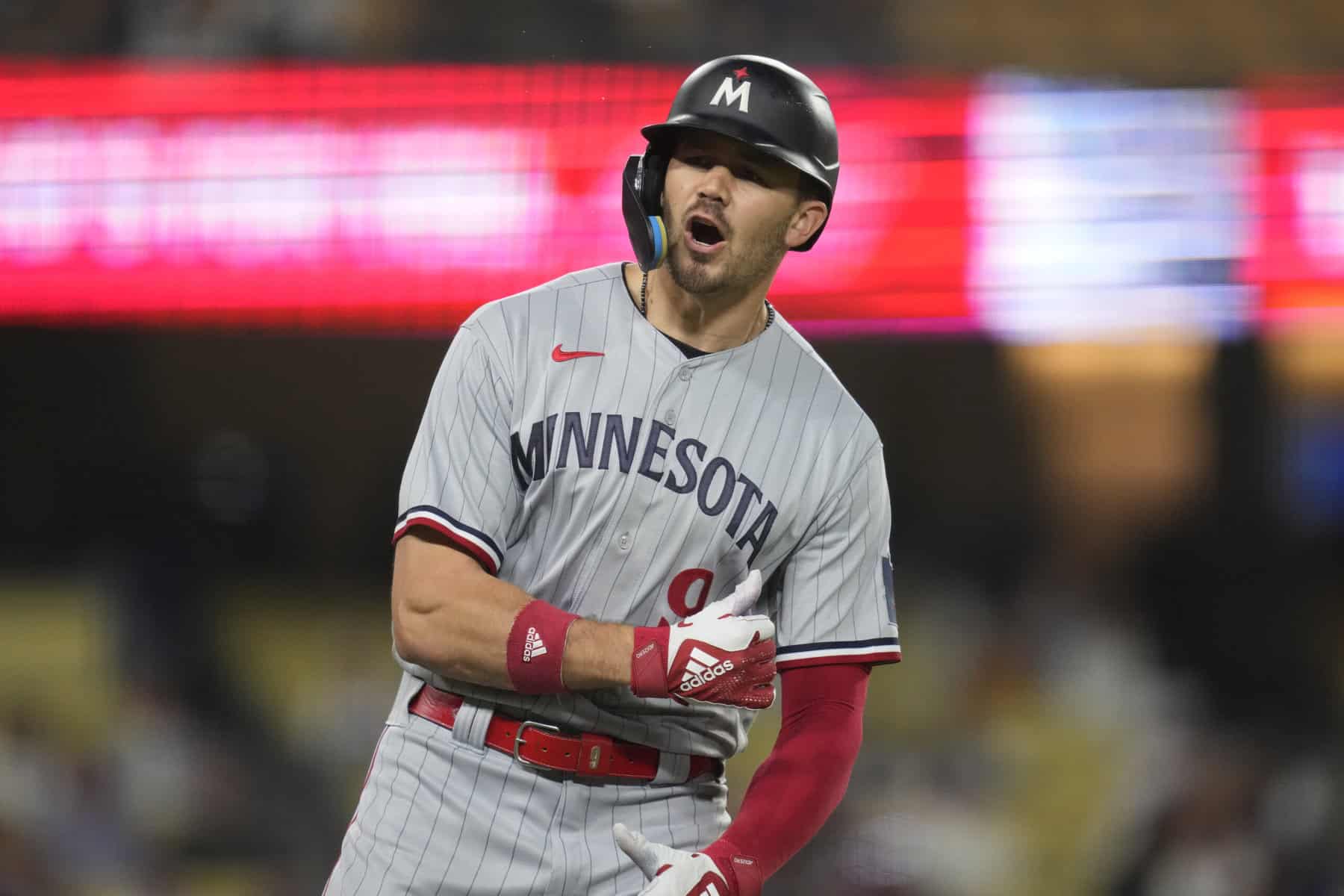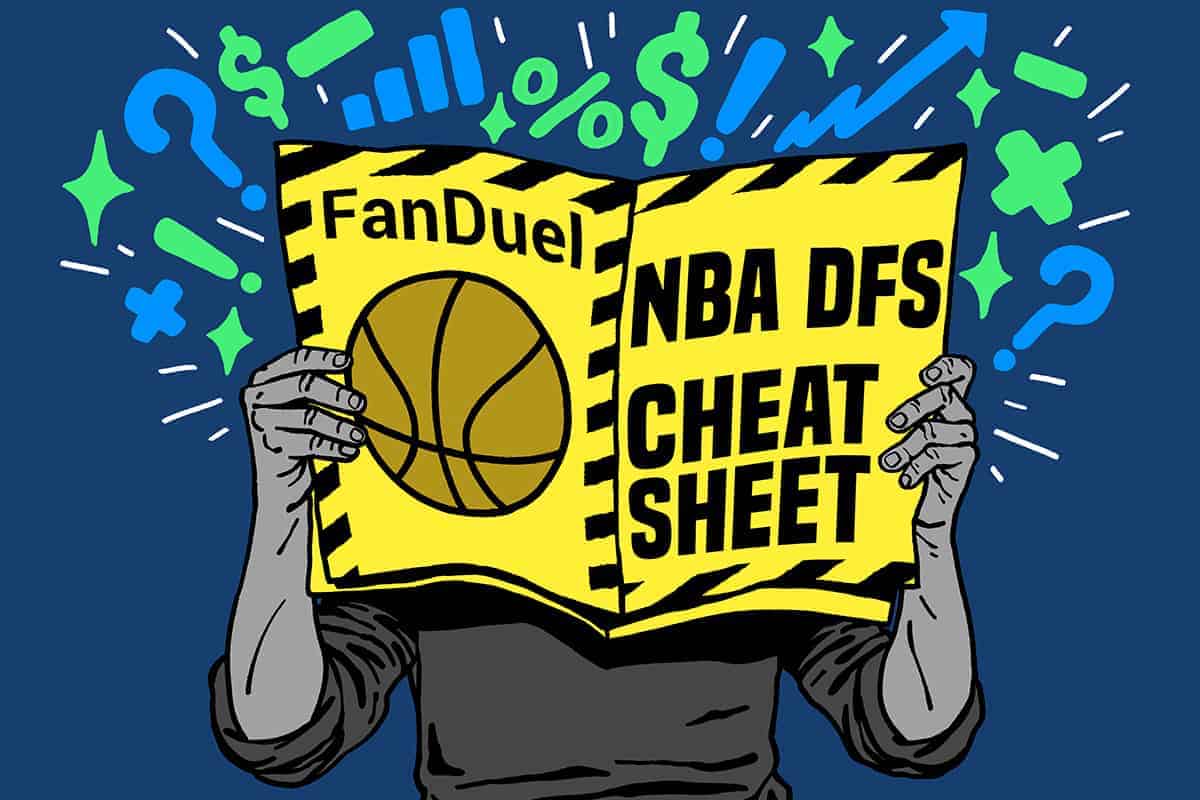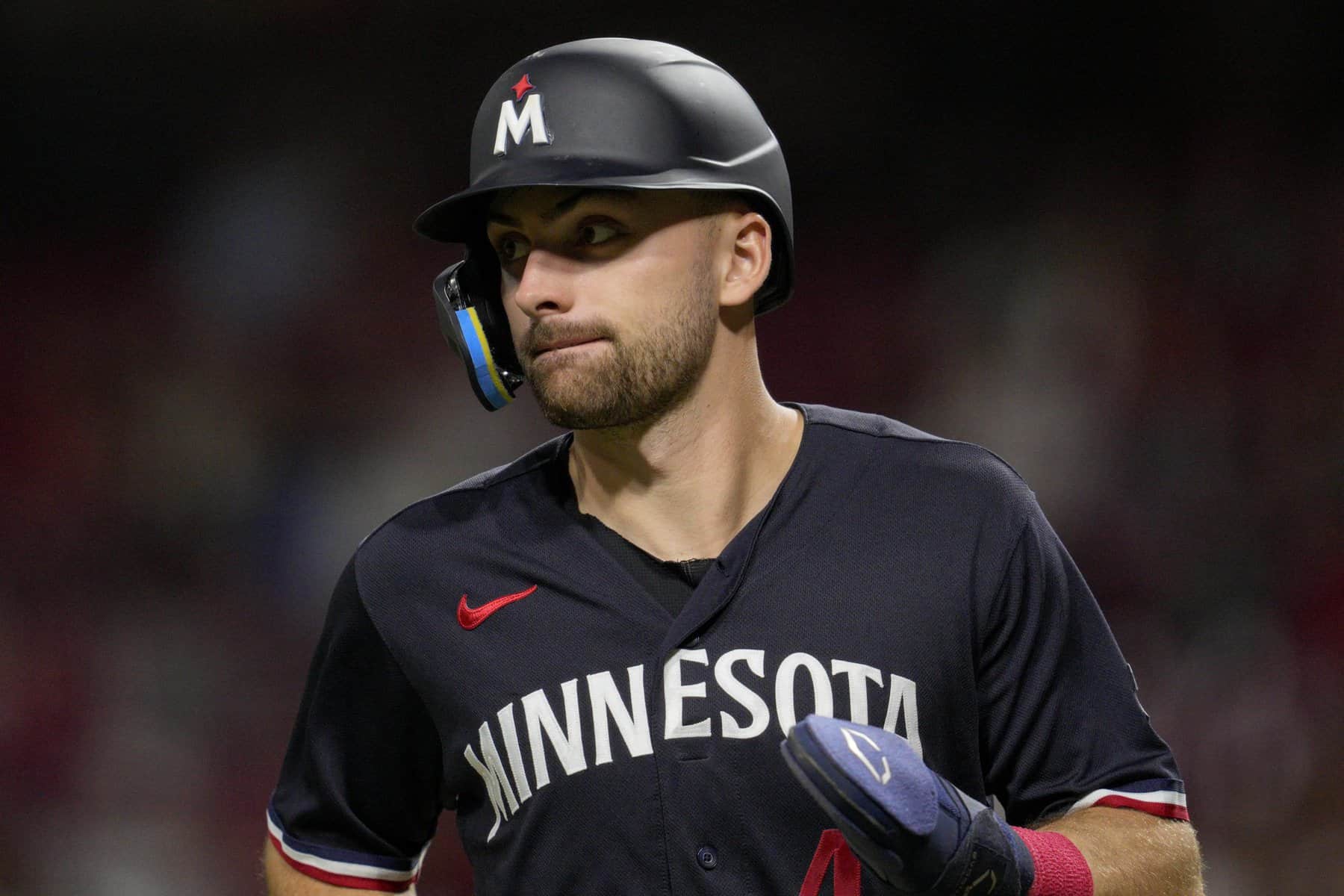Since the NFL lineup review article went well, I decided to do the same thing with MLB for the rest of the season. I’ve recently cut back on max-entering large-field tournaments and have started to focus more on three-max and single-entry GPPs. I will break down one of my main lineups from the night before in this article. If I have a lineup that does well, I will talk about that one. Otherwise I will use whichever lineup I played in the $100 single entry. Last night, I won the $250 Four-Max tournament, so we can take a look at that lineup.
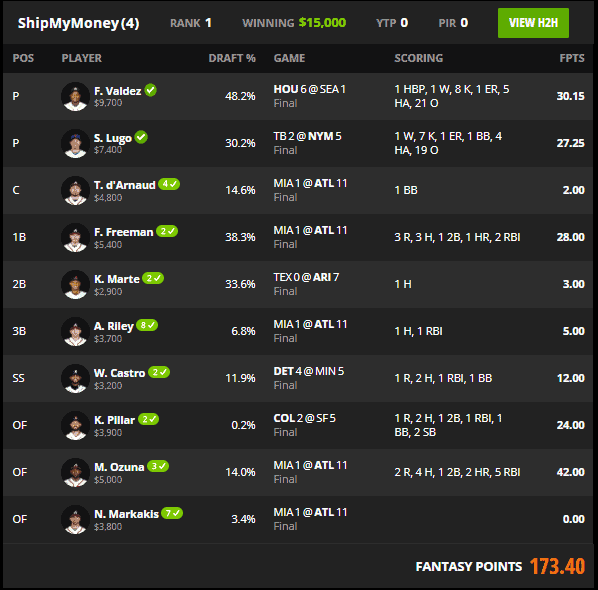
The Stack
The Braves were one of the best stacks on the slate last night as they had the second-highest top stack percentage at 8.8 percent and they were only projected for 7.3 percent aggregate ownership. For comparison, the Astros had the highest top stack percentage and were projected for 11.4 percent ownership because it was much easier to fit them into your lineups. Knowing this information, it was obvious that the Braves were a great stack to target, but we still needed to figure out how to make them fit within a lineup since they were expensive.
The first thing to notice in this particular lineup is that Ronald Acuna is missing. While I don’t love avoiding the best or second-best hitter in a stack, it is baseball and there is enough variance that it isn’t that big a deal. It’s not like stacking the Packers without Davante Adams or Aaron Jones since all of the hitters within a lineup will have the same number of opportunities (roughly speaking, obviously hitters at the top of the order are likely to get an extra at-bat compared to the bottom of the order). In addition to saving salary by not including Acuna, it also has the benefit of making my Atlanta stack contrarian since such a high percentage of Braves stacks will include Acuna.
I looked to the bottom of the order to save some money with Nick Markakis and Austin Riley. Riley in particular is the type of hitter that I love including in stacks when he is inexpensive and low-owned because of his spot in the order. He has plenty of power, so I’m not sacrificing ceiling by rostering him, even though his median projection is lower than some guys at the top of the order since he is likely to lose a plate appearance. While this is kind of a weird stack as far as using the two, three, four, six and seven hitters, it still had plenty of power. Since 2018, Freddie Freeman, Marcell Ozuna, Travis d’Arnaud, Markakis and Riley have ISOs of .235, .303, .218, .141 and .218, respectively. I also don’t mind skipping a couple of spots in my stack as much on DraftKings as I would on FanDuel since runs and RBI are weighted less relative to home runs.
There is no secondary stack in this lineup, as I needed to use value one-offs in order to fit the Braves stack with the pitching that I wanted.
The Pitching
Framber Valdez and Seth Lugo were both in all four lineups that I played last night. They were both popular, but I didn’t see much reason to get away from them — especially when I could find some low-owned hitters with upside. I had Lugo projected as the highest-scoring pitcher on the slate at only $7,400, so even though he was projected for 39 percent ownership, it wasn’t a spot that I was looking to avoid. Valdez was my second-highest-projected pitcher and he was projected for 31.6 percent ownership. My implied ownership number for him was 31 percent, so I didn’t think he was over-owned despite the relatively high raw ownership number. The most natural pivot to Valdez would have been Blake Snell, but we had him projected for 39 percent ownership, and I thought he should only be about 23 percent owned. Based on those numbers, rostering Valdez over Snell was an easy decision in any given lineup.
The One-Offs
Ketel Marte was one of the most obvious value hitters on the slate as he was only $2,900 as the No. 2 hitter for a Diamondbacks team with a 5.4 implied run total. Marte has a .339 wOBA, .179 ISO and 109 wRC+ against right-handed pitching since 2018, so there is just no reason for him to be that cheap (and he is again tonight so feel free to use him as value again). We had him projected for 35 percent ownership, so there was no doubt he was going to be chalk. This is a good example of the ownership of a lineup mattering more than any individual player, however. If you look only at Marte and say “should I roster him at 35 percent ownership?”, the answer is no. Basically no hitter should ever be 35 percent owned in a GPP if we are only considering that one hitter. But within the context of a lineup that had a couple contrarian Atlanta hitters in the stack, it is OK to use a popular value hitter to help round out your lineup.
Willi Castro was hitting second for the Tigers at only $3,200. He had a decent matchup against Homer Bailey and has posted a .331 wOBA, .167 ISO and 107 wRC+ through his first 191 plate appearances against right-handed pitching. He also has a little bit of speed with 17 stolen bases in 119 games at AAA last season, though he hasn’t stolen a base in the majors yet. He certainly wasn’t a player to get excited about, but he offered some value at shortstop and fit into this lineup nicely.
Kevin Pillar was the one-off that ultimately won me the slate. Going into the late games I had a solid team, but I was assuming I would finish around 10th or 15th and lose a little bit of money on the night. I wish that I could say I’m really smart and there was something about Pillar that made me want to play him last night, but that isn’t the case. It is just an example that if you continuously put yourself in positions to get lucky by building lineups that leverage low-owned players, sometimes you will get lucky and get paid nicely. We had Pillar projected for less than 2 percent ownership, and my numbers suggested that he should be about 8 percent owned, making him grade out very highly as a leverage play. Pillar has a .330 wOBA, .178 ISO and 107 wRC+ against left-handed pitching in his career and also offers some stolen base upside. He was also hitting second at an affordable salary. So, I don’t mean that you just roster random players and hope to get lucky, I just mean that there wasn’t anything that made me think “oh man, Pillar is in a great spot tonight”. It was just a matter of thinking that his ownership was much lower than it should be and needing another contrarian piece in this lineup.
I plan to write this article Tuesday-Saturday for the rest of the MLB season, and hopefully we will have some GPP wins to talk about before it’s over. If there is anything from a process standpoint that you want me to talk more about in the future, let me know. Also feel free to DM me in Slack with questions, comments, etc.
Follow us on all of our social channels! Check out our Twitter, Facebook, Instagram and YouTube for more great Awesemo content.
Looking for more MLB DFS picks content? We’ve got loads of articles, data, cheatsheets and more on the Awesemo MLB home page, just click HERE.

